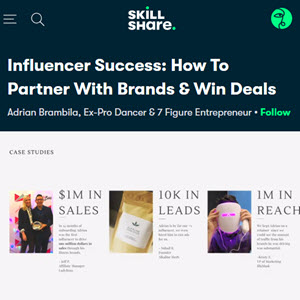The Future Of Marketing

I hesitate to say that the Social Network Race is over – look at AOL, MySpace and Friendster, all of which used to dominate – but let’s face it, all of these former giants now pale compared to Facebook and Google (and Twitter, if we’re also measuring based on buzz).
Unlike those early players, today’s winners are holding a much more winning hand. Google and Facebook are shooting arrows in the backs of those original pioneers.
The reason Facebook and Google will be the long-term winners: it’s not just the fact that they have critical mass, but that that critical mass comes at a time when Social Networks are not just destinations (a la the old AOL and MySpace), but are becoming integral to the holistic Web Experience.
There will be room for niche social networks, too, of course, like Ning and LinkedIn. For as much value as people see in the bang-for-the-buck they receive by joining the biggest social networks, they also don’t like to feel like a member of the faceless hordes. Joining a virtual knitting circle on Ning provides intimacy and smaller-bore friendships.
And your activities on a site like Ning will help refine the experiences you get elsewhere, i.e., the ads or causes or friend suggestions you see on Facebook will skew towards promoting the known behaviors of the “knitter” psychographic profile.
And so, now that we know the presumptive winners of the Social Networking Era, we can move forward into the not-so-distant future, to envision how we’ll handle The New Marketing…
When we surf and when we search, beyond the Social Network sites, we’re going to be taking our Friends with us; we’re taking our known online activities with us. Sites and search engines will re-orient themselves dynamically to match our identities. The entire Web experience will re-architect itself on-the-fly based on where we’ve been, what device we’re using, what we’ve looked at or purchased in the past, who we are friends with, what offers and content our contacts have been sharing and purchasing, etc.
In the future, the Web you know will be based on the Web that knows you.

This is validated, quite easily, by the efforts of Google and Facebook, with their competing “Connect” products, which also vie with the OpenID standard. The Masters of the Web are desperate to lodge themselves in our extended online activities.
We can also feel pretty confident that this will all happen because Social Media has simply become an unstoppable force. When “checking Social Networking sites” trumps “checking email” (Nielsen: Global Online Media Landscape report, April 2009) you know the marketers are on the hunt. According to MarketingSherpa in a 2009 report, Social Media Marketing topped the list of marketing execs’ future spending plans.
The social networks are just going to “follow that money.” Who could blame them?
That might not be such a bad thing, as “following the money,” in this case, could well result in a more custom-tailored online experience that leverages the experiences of friends and connections in a mutually beneficial way.
What will this future of marketing mean for marketers? How will it change our approach?
First off, I suspect a lot of the Long Tail stuff, e.g., making special offers based on known behaviors and connections, will be automated: it’s too hard to scale otherwise, and besides this is not so far removed from Search Engine Marketing techniques, from a tools & mindset perspective.
However, that doesn’t mean that we’ll devolve back to the Influencers-Are-Paramount mindset that led to the PR spam that plagued our industry (and those poor Influencers) for the past 50 years, either. We’ll become more sophisticated: we’ll be able to identify micro-influencers and influencers-of-influencers.
Want examples? You always want examples.

Before delving into examples of human-based outreach, let’s look at how Social Media might be used by marketers to automate the way they interact with consumers online, in a way that syncs with the growing desire for an opt-in (low-scandal) experience.
I foresee a day when consumers will be able to turn on/off disclosure preferences from within their social profiles (or even their browsers), to actively change their daily surfing, e.g., sometimes a consumer will want her entire web experience to re-orient itself around the fact that she is an avid yoga enthusiast: so she’ll activate that detailed keyword on a day when she’s in the market for a new yoga mat or a new yoga partner.
Her travels across the social web on that day will reveal advertisements for Nike’s YoGirl Yoga Mat and the Boston Sports Club — and the advertisements may offer special discounts if this consumer is known to have over 300 friends within her metro. Based on how the “yoga enthusiast” keyphrase has re-oriented her psychographic profile for the day (“she’s healthy, but not hardcore; mindful; probably charitable and green-minded”), she’ll also be invited to participate in a 5K walkathon for a local eco-charity. Her next visit to Yelp will emphasize healthy eating establishments. Once she’s purchased those new sneakers, found a new yoga partner, etc., the consumer will switch off her “Yoga Girl” identity and resume her websurfing in a more generic way…
That’s a pretty awesome vision in and of itself. But marketers crave personal interaction; they want active brand ambassadors; they need differentiation and buzz.
So, looking at the future of marketing outreach in a social age: Let’s say you sell baking supplies. In ye olden

days, you’d look to place articles in Modern Baking to reach wholesale prospects and Martha Stewart Living to reach consumers. More recently, perhaps you’d add mombloggers to the mix. Maybe you’d also reach out to one of the baker’s dozen’s worth of active Baking-related groups on Facebook.
But in the near future, you’ll add @ChillieFalls (Jason’s dad) to your list of outreach targets. Why? Because Mr. Falls is a maker of funnel cakes, and he’s active on Twitter. Given that Twitter dominates Google and Bing’s incipient real-time search results, if you’re selling baking supplies you’ll want to court Mr. Falls. His tweets about your product could easily show-up prominently in those real-time results.
Imagine that: the efforts you expended courting a managing editor at Martha Stewart Living are now spent getting to a funnel cake maker in Virginia.
And when you want to reach the notice of Chris Brogan, maybe you’ll use a service like BackType to note the 8 people whose comments Chris wants to keep tabs on, and you’ll try to influence them by initiating a dialogue that they find helpful. Maybe your examination of their public interactions suggests that they have a favorite charity or a quirky interest in exotic cartoon art: knowing this you can figure out a way to satisfy their engagement preferences, and generate content and dialogue worth spreading via their blogs, tweets — or private conversations with Mr. Brogan. Congratulations! — you’ve influenced the influencer of an Influencer.
And that’s how tomorrow’s game is going to be played.
Continue reading here: Tweeting Under False Circumstances: Social Media Ethical Dilemmas
Was this article helpful?


